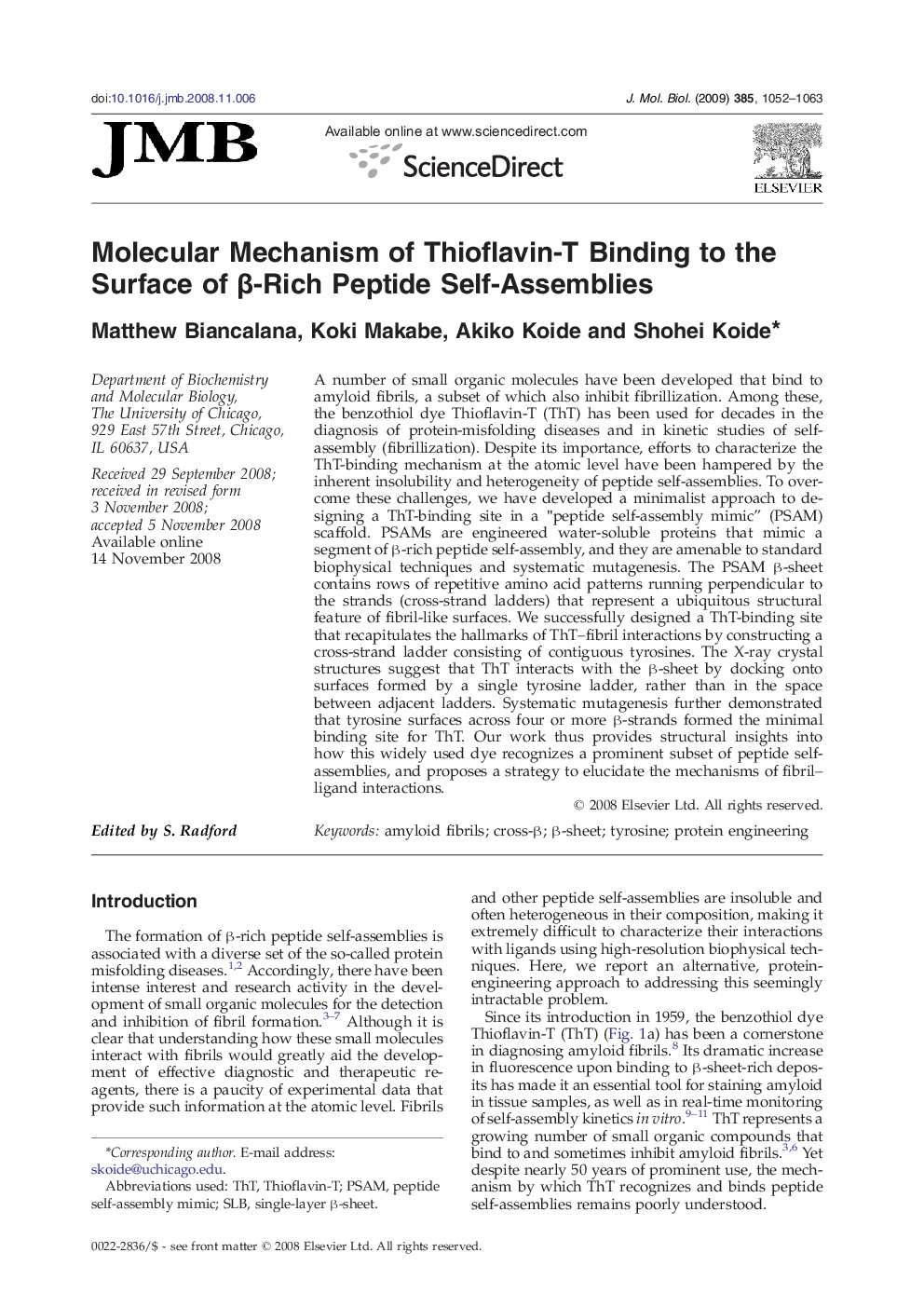| کد مقاله | کد نشریه | سال انتشار | مقاله انگلیسی | نسخه تمام متن |
|---|---|---|---|---|
| 2187103 | 1096097 | 2009 | 12 صفحه PDF | دانلود رایگان |

A number of small organic molecules have been developed that bind to amyloid fibrils, a subset of which also inhibit fibrillization. Among these, the benzothiol dye Thioflavin-T (ThT) has been used for decades in the diagnosis of protein-misfolding diseases and in kinetic studies of self-assembly (fibrillization). Despite its importance, efforts to characterize the ThT-binding mechanism at the atomic level have been hampered by the inherent insolubility and heterogeneity of peptide self-assemblies. To overcome these challenges, we have developed a minimalist approach to designing a ThT-binding site in a "peptide self-assembly mimic” (PSAM) scaffold. PSAMs are engineered water-soluble proteins that mimic a segment of β-rich peptide self-assembly, and they are amenable to standard biophysical techniques and systematic mutagenesis. The PSAM β-sheet contains rows of repetitive amino acid patterns running perpendicular to the strands (cross-strand ladders) that represent a ubiquitous structural feature of fibril-like surfaces. We successfully designed a ThT-binding site that recapitulates the hallmarks of ThT–fibril interactions by constructing a cross-strand ladder consisting of contiguous tyrosines. The X-ray crystal structures suggest that ThT interacts with the β-sheet by docking onto surfaces formed by a single tyrosine ladder, rather than in the space between adjacent ladders. Systematic mutagenesis further demonstrated that tyrosine surfaces across four or more β-strands formed the minimal binding site for ThT. Our work thus provides structural insights into how this widely used dye recognizes a prominent subset of peptide self-assemblies, and proposes a strategy to elucidate the mechanisms of fibril–ligand interactions.
Journal: Journal of Molecular Biology - Volume 385, Issue 4, 30 January 2009, Pages 1052–1063